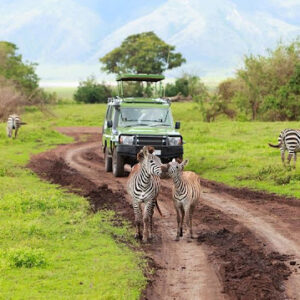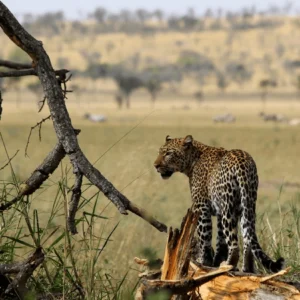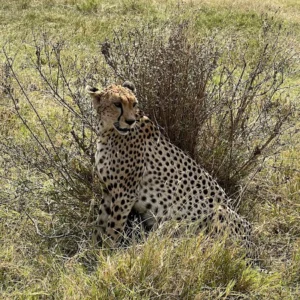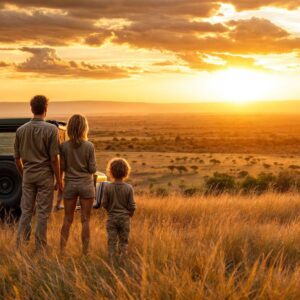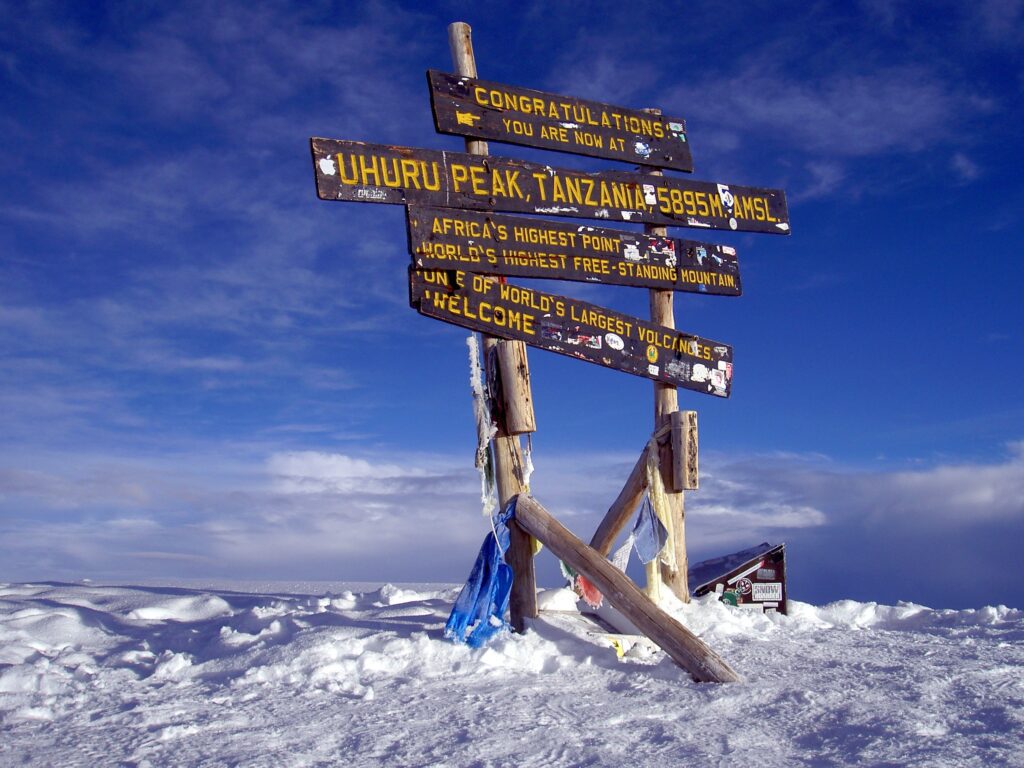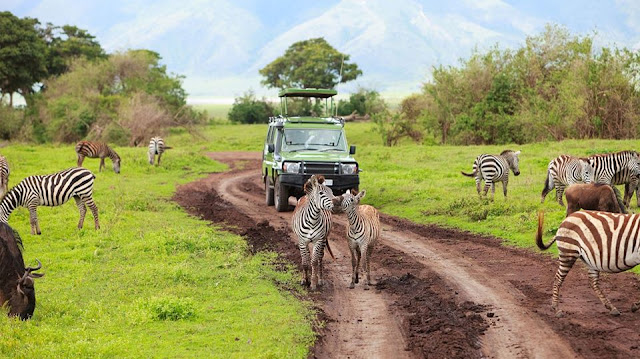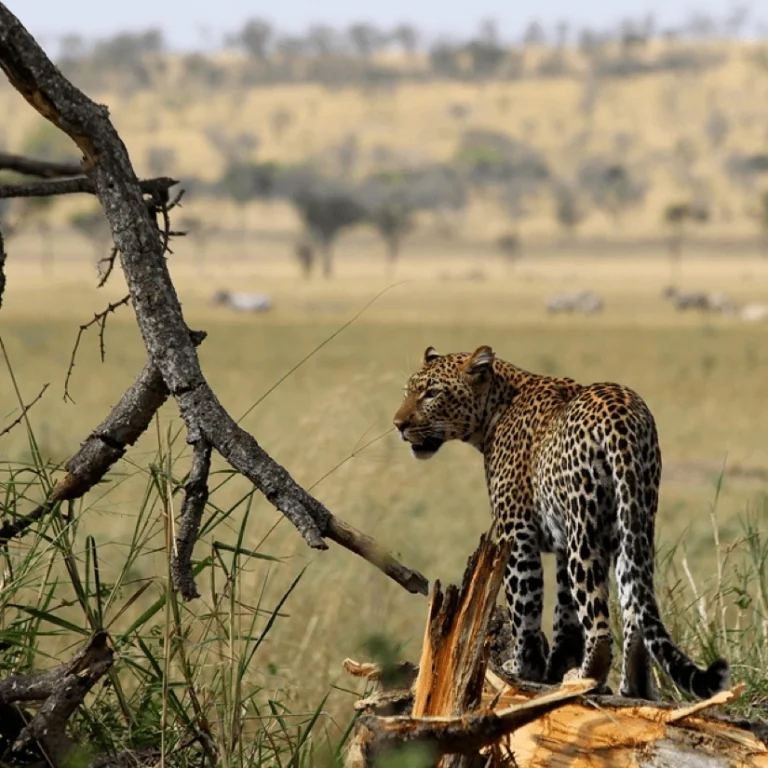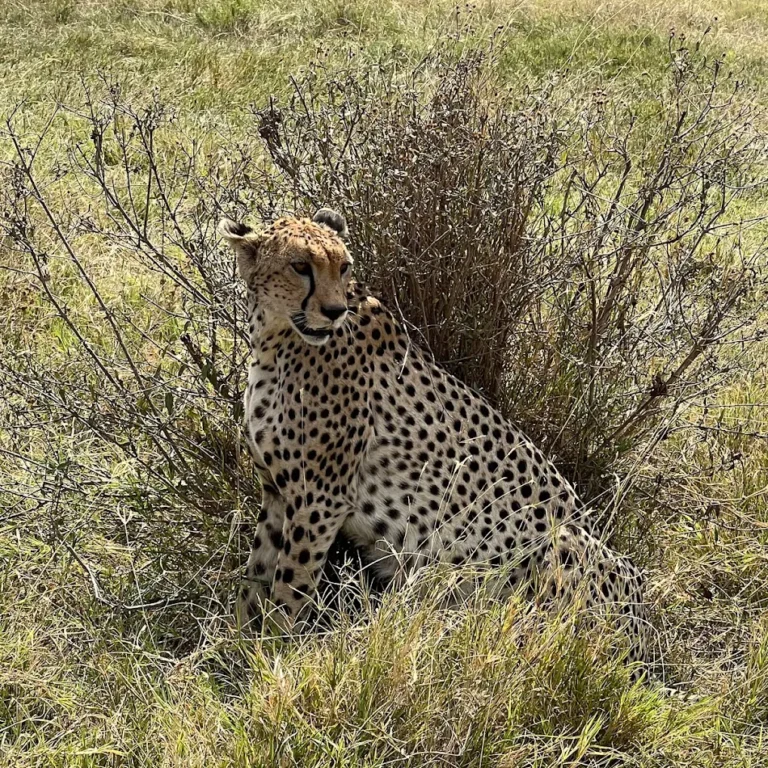An African safari is an unforgettable adventure filled with breathtaking wildlife encounters and cultural interactions. By planning thoughtfully, choosing your destination and type, packing appropriately, and respecting local customs, you can ensure a rewarding experience that will linger in your memory for a lifetime. So, gear up for your adventure, and get ready to explore the wild heart of Africa! Imagine waking up to the sounds of the African savanna, ready to witness lions, elephants, and zebras in their natural home. An African safari is a once-in-a-lifetime journey. It offers diverse landscapes, unique wildlife encounters, and rich cultural experiences. This guide has comprehensive information to plan your ideal safari adventure.’
1. Defining Your African Safari Dream
Before booking a flight, you need to define what kind of safari experience you’re seeking. Are you interested in a luxurious, family, honeymoon/couple, solo travelers, all-inclusive experience or a more budget-friendly adventure? Consider the following factors:
Duration: Safari trips range from a few days to several weeks the ultimate guide to going on an African Safari. The longer the trip, the more opportunities to see a wider variety of wildlife and landscapes.
Location: Different regions of Africa offer unique wildlife encounters. The Serengeti in Tanzania is famous for its wildebeest migrations, while Kruger National Park in South Africa boasts a diverse range of animals. Research the specific wildlife you’d like to see and choose a location accordingly.
Budget: Safari costs vary significantly depending on the level of luxury, accommodation, and activities. Develop a realistic budget and explore different options to find the best value for your money.
Travel Style: Do you prefer a guided tour, or a combination? Guided tours offer a more structured experience with expert guides, while self-drive offers greater flexibility. Consider your comfort level and experience with driving in unfamiliar environments.
Wildlife Focus: Some safaris focus on specific animals, like birdwatching tours, while others offer a more general wildlife experience. Clarify your interests to ensure the safari aligns with your expectations.
2. Choosing Your African Safari Destination
Africa has many options for amazing safari trips. Each area provides unique experiences the ultimate guide to going on an African Safari. Think about what you want to see and do on your dream safari. Africa boasts various safari destinations, each offering unique experiences. Some of the most popular top Safari destinations in Africa options include:
Serengeti National Park, Tanzania: Renowned for its annual wildebeest migration, the Serengeti is a treasure trove of wildlife with opportunities to see lions, elephants, and leopards in abundance.
Ngorongoro Crater, Tanzania: A natural wonder with a high concentration of wildlife, making it one of the best places to spot the Big Five in a single day.
Lake Manyara National Park: This park is famous for its tree-climbing lions, diverse bird species, and picturesque landscapes. Lake Manyara offers a unique contrast to the vast plains of the Serengeti.
Zanzibar Beach: For those who want to unwind after a safari, the white-sand beaches of Zanzibar provide the perfect tropical escape. The island is known for its vibrant culture, spice tours, and crystal-clear waters.
Tarangire National Park: A hidden gem, Tarangire National Park is home to massive elephant herds and stunning baobab trees. It offers excellent game viewing, especially during the dry season.
Lake Eyasi: For cultural experiences, Lake Eyasi provides an opportunity to interact with the Hadzabe and Datoga tribes, who still live in traditional ways.
Arusha National Park: A smaller but scenic park, Arusha National Park offers lush forests, waterfalls, and the chance to see colobus monkeys. It’s also a great spot for canoeing and walking safaris.
Mount Kilimanjaro: If you’re up for an adventure, climbing Mount Kilimanjaro, the tallest mountain in Africa, is a bucket-list experience.
Mount Meru: Less crowded than Kilimanjaro, Mount Meru offers a challenging yet rewarding trek with stunning views and abundant wildlife.
Lake Natron: A surreal landscape with crimson-colored waters, Lake Natron is famous for its flamingos and unique geological formations.
Specific Considerations for Destination Choice
Picking the right destination relies on budget and when you are going. Certain times of year are better for some wildlife views. What you want to see and do plays a big part too. Gorilla trekking permits cost much more than game drives the ultimate guide to planning a successful first African Safari. The dry season is often better for wildlife views, as animals gather around water sources.
3. Types of African Safaris: Finding the Right Experience for You
Many types of safaris exist, so find the one that matches what you want. Do you dream of a comfy lodge or moving from place to place?
Mobile Safaris: Mobile safaris allow you to get closer to nature. You can move from camp to camp. This provides a true nature experience. These safaris often include walking trips to see the land up close the ultimate guide to going on an African Safari.
Luxury Lodge Safaris: Luxury lodge safaris give comfort and great service. These lodges have nice rooms, fine dining, and guided tours. While pricier, you can enjoy all the comforts you need.
Budget Safari: For those looking to save, there are affordable lodges and camping options that don’t skimp on experience. –
Walking Safari: Immerse yourself in the wilderness with guided walks, getting closer to the flora and fauna.
Photographic Safaris – Tailored for wildlife photography enthusiasts. The beginner’s guide to photographing an African Safari with such an incredible landscape and impressive wildlife, Africa is a photographer’s dream come true. Here’s my guide to photographing an African safari!
Tips for Photography on an African Safari
Bring the right lens. Choosing your camera. Be patient. Camera lens checklist for safari photography. Support your camera. Use high shutter speeds. Camera settings. Focus on the eyes. Patience. Talk to your guide. Tripod for long exposures at night. Anticipation of the moment. Battery chargers. Burst shooting mode. Buy equipment to clean your camera. Consider lighting. Extra batteries. Master your safari photography gear. Photographing nocturnal animals on safari. Pick the right time & location. Practice. Respect the wildlife. Shoot in raw if you can.
4. Planning Your African Safari: A Step-by-Step Guide
Planning is vital for a smooth safari. Here’s how to create an amazing experience. Choosing the Right Safari Operator: Reputable safari operators are crucial for a smooth and safe experience. Research thoroughly and read reviews from previous clients. Look for operators who:
Prioritize Ethical Practices: Choose operators committed to sustainable tourism and conservation efforts. Inquire about their community involvement and environmental impact.
Offer Experienced Guides: Guides are essential for identifying wildlife and providing a rich cultural understanding of the region. Look for guides who are knowledgeable and passionate about their work.
Provide High-Quality Accommodation: Consider the level of comfort and amenities you desire. Luxury lodges offer exquisite accommodations, while more basic camps provide a more immersive experience.
Provide Safe and Reliable Transportation: Ensure the vehicles used for game drives are well-maintained and safe. Consider the type of vehicle for your needs (open-top jeeps, 4x4s).
Offer Flexible Options: Some operators provide flexibility in itineraries, allowing you to adjust the schedule based on your interests.
Booking Your Safari: Choosing a reliable tour company is key. Look at reviews and ask for advice. Check what is included and what isn’t. Then you will know your trip is covered. Ask the tour provider about their guides’ experience, their conservation efforts, and their cancellation policies.
When to Go: When to visit is important for wildlife viewing. The dry season (June to October) is best in East Africa for the Great Migration. Africa is great in the dry season too. Less greenery means animals are easier to spot. Our ultimate guide highlights everything you need to plan and prepare for a luxury Africa safari trip. Start planning your luxury African safari today with experts and It’s advisable to make reservations eight to twelve months in advance.
Budgeting for Your Safari: how much to budget for an African Safari? Safaris have different costs. Flights, places to stay, park fees, and activities all add up. Luxury lodges cost more than camping. Booking in advance helps you find better deals, a guide to your first African Safari. Also, it makes planning easier.
5. Where I’ve Stayed: Choosing an African Safari Lodge
Choosing the right African safari lodge enhances your experience, balancing comfort and adventure. I’ve stayed in luxury lodges like Four Seasons Serengeti, offering top-tier amenities and private game drives. For an authentic feel, Asilia’s Namiri Plains provided a blend of elegance and wilderness. Mid-range tented camps like Kati Kati Camp in the Serengeti offer affordability without sacrificing comfort. Eco-lodges in Ngorongoro provide sustainable, immersive experiences. Your choice depends on budget, location, and the type of adventure you seek.
6. Essential Packing List for an African Safari
What to Pack for an African Safari? Packing right is vital for your comfort and safety. Think about clothes, gear, and health needs. Packing appropriately is vital for a comfortable and successful safari. Pack light, but include:
Appropriate Clothing: Lightweight, breathable clothing in neutral colors is ideal for blending into the environment. Consider layers for varying temperatures.
Comfortable Walking Shoes: You’ll be doing a lot of walking, so comfortable and supportive shoes are essential.
Insect Repellent: Malaria-prevention medication and strong insect repellent are crucial.
Sunscreen and Hat: The sun can be intense, so protect yourself from sunburn.
Binoculars: Essential for observing wildlife from a distance.
Camera: Capture the unforgettable moments of your safari.
First-Aid Kit: Pack essential medications and supplies for minor injuries.
Visa Requirements: Ensure you have the necessary visas and permits for the countries you’ll be visiting. Check the specific requirements well in advance.
7. Best Time to Go on an African Safari
When is the best time to go on Safari in Africa by Month? The timing of your safari can greatly impact your experience. Generally, the dry season, which is from June to October, is the best time for game viewing. Wildlife tends to congregate around water sources, making it easier to spot animals. However, if you’re interested in witnessing the Great Migration, plan your trip around June – October for the best chances the ultimate guide to planning an African Safari. The ideal time for an African safari depends on the specific destination and the type of experience you seek.
Dry Season (June – October): This is the best time for wildlife viewing as animals gather around water sources. Destinations like Serengeti National Park, Tarangire, Lake Manyara, Mount Kilimanjaro National Park offer exceptional game sightings during this period.
Wet Season (November – May): Lush green landscapes, fewer tourists, and excellent birdwatching make this an attractive season. This is the best time to visit Tanzania’s Ngorongoro Crater for dramatic scenery and newborn wildlife.
8. Safety Precautions and Healthy During an African Safari
Stay safe and healthy on an African safari by following your guide’s instructions, staying hydrated, wearing sun protection, and using insect repellent. Get necessary vaccinations, carry a first aid kit, and take malaria prophylaxis if needed, the ultimate guide to going on an African Safari. Avoid close wildlife interactions and always respect park rules for a safe experience.
Respect Wildlife: Keep a safe distance from animals and never approach them. Follow the guidelines of your guides.
Listen to Local Staff: Guides are trained to ensure safety and provide valuable insights. Follow their instructions carefully.
Stay Hydrated: Drink plenty of water, especially during hot days.
Be Aware of Your Surroundings: Be mindful of your surroundings and potential risks.
Inform Someone of Your Itinerary: Let someone know your itinerary and planned return time, especially if traveling independently.
Get vaccinations: Check for required vaccinations, such as yellow fever and malaria prevention.
Use insect repellent: Protect yourself from mosquito bites to prevent malaria
9. Ethical Considerations During an African Safari
Respect wildlife by keeping a safe distance and avoiding loud noises. Follow ethical guidelines, never feed animals, and support conservation-focused tour operators, an ultimate guide to planning your first African safari adventure. Choose eco-friendly lodges, minimize waste, and respect local cultures. The ultimate guide to going on an African Safari, responsible tourism ensures Africa’s natural beauty and wildlife thrive for future generations.
Support Local Communities: Choose operators that support local communities and contribute to conservation efforts.
Minimize Your Environmental Impact: Be mindful of your actions and avoid unnecessary waste.
Respect Local Culture: Learn about the customs and traditions of the region and respect them. A safari in Africa is an adventure of a lifetime that offers unmatched opportunities to interact with wildlife and the natural world.
Ultimate Guide for the Luxury African Safari Tours
Embark on an unparalleled African adventure, discover the top 5 Luxury African Safari Experiences ultimate guide explores Serengeti, Tarangire, Lake Manyara, Arusha National Park, Ngorongoro crater, and Zanzibar beach vacation holiday trips. Traverse vast savannas, witness majestic wildlife, and indulge stay in opulent luxury safari lodges like Serengeti Melia Safari lodge, Four Season Serengeti Safari lodge, Melia Ngorongoro safari lodge. Expert guides unveil hidden gems, ensuring exclusive encounters. From hot air balloon safaris to gourmet bush dinners, this ultimate guide crafts bespoke journeys, blending untamed wilderness with refined luxury.
Conclusion: The Ultimate Guide to Going on an African Safari
An African safari offers an extraordinary experience, blending breathtaking landscapes with incredible wildlife encounters. By carefully planning your trip, choosing a reputable operator, and adhering to safety precautions, you can ensure a memorable and fulfilling adventure. Remember to respect the environment and local communities, making your safari a positive contribution to the conservation of Africa’s natural heritage. Ultimately, responsible travel is key to ensuring that future generations can also experience the wonders of this remarkable continent.

